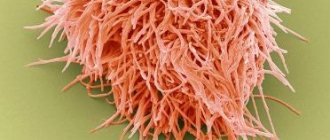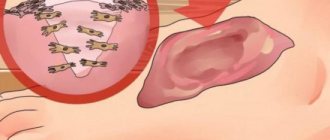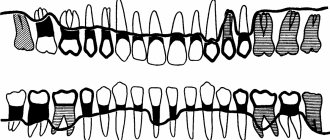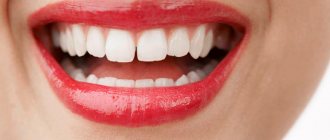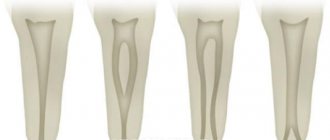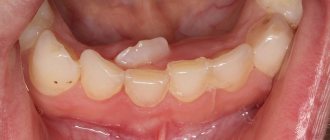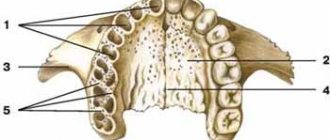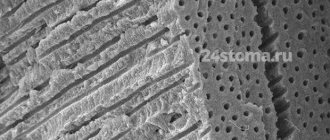In what cases may the bone fail to take root?
The bone may not take root in cases where it becomes infected, including when the patient violated the schedule for taking antibiotics or did not follow the doctor’s orders.
Much attention is paid to food intake: the patient can simply, out of forgetfulness, bite into something hard, and his stitches will come apart, and the material and bone graft will become infected through the open wound.
The above accounts for 90 percent of cases
when the bone may not take root.
Are there any contraindications to bone grafting?
Of course, there are contraindications to bone grafting. These include
:
- various chronic diseases, incl. diabetes mellitus with high sugar levels,
- the period when the patient takes a number of drugs, including chemotherapy,
- in the period after chemotherapy, when the bone cannot be “touched” at all.
Features of hygiene after bone grafting
After bone grafting it is recommended
:
- use of special surgical toothbrushes,
- the use of toothpaste should be limited, and even better, use special toothpastes for post-surgical interventions,
The main thing when carrying out hygiene is NOT TO INJURY
area of bone grafting! You should try to eliminate contact with this area or reduce it to a minimum.
When can you do without bone grafting?
You can always do without bone grafting when you can install an implant of the required diameter and required length into the remaining bone.
And, in fact, you shouldn’t do bone grafting just to assert yourself. Some doctors suffer from this, trying to prove to themselves or someone else how they can do bone grafting.
But, as they say, the best bone grafting is the one we don’t do: if the patient can be rehabilitated without bone grafting, then it’s better to do just that. Since volume can be added with soft tissues, connective tissue can be transplanted - a graft, or drugs can be added to replace the volume of soft tissues - and achieve an excellent result!
What implants are used after bone grafting?
Are there “special implants” that are recommended in cases of bone grafting? Both with bone grafting and without bone grafting, it is necessary to use implants only from good, proven manufacturers, those that have a good clinical base. For example – Straumann, Nobel, Ankylos, Xive, Astra Tech.
There are a number of other implant systems that give good results. But at the German Implant Center we use only the best implant systems, only premium ones.
How is implantation performed during bone grafting?
Implantation during bone grafting can be carried out either simultaneously with bone grafting, or delayed - when the implants are installed in the new “grown” bone.
As an experienced implant surgeon, in my practice, in 80-90 percent of cases I perform bone grafting at the same time
with implantation.
I will explain why I perform plastic surgery with implantation at the same time, and what is the advantage of this approach. Bone grafting itself requires a long healing period, from 4 to 9 months. And if we maintain this period and then do implantation, then we have to wait another 4 months. That is, the time frame in this case increases significantly.
And if I do implantation along with bone grafting, then the implant takes root along with the bone. A good implant has an excellent osteogenerating surface, and when fused, an excellent result
.
This reduces the patient’s rehabilitation time. And most importantly, the patient DOES NOT NEED
second surgery. We understand that a large number of surgical interventions do not improve trophism, mucous membranes, or bone tissue.
Everything we do at the German Implant Center, from tooth extraction to implantation, is carried out as atraumatically as possible for the patient.
How many implants are placed during a total restoration?
We specialize very broadly in total implant rehabilitation. In the upper jaw, 6-8 implants are recommended according to our protocol; in the lower jaw, 6 implants are sufficient for total rehabilitation.
Often, implantation occurs simultaneously with the installation of temporary teeth, that is, the patient leaves the clinic “with teeth”, and not on the second or third day, but on the same day when implantation is done:
Preliminary implantation planning is carried out using CBCT, the implants are placed in the required positions.
After this, a surgical template is made, according to which the implants are installed. And based on the same computed tomography (CBCT) and images, a temporary structure is made that will be attached to the implants installed for the patient.
And it turns out the so-called “full case” is when the patient comes, if necessary, if circumstances require it, teeth are removed (or they have already been removed/lost earlier), implants are placed on the patient and an orthopedic structure is fixed - his new teeth.
Dentine
The bone substance of the tooth is its main part. Dentin performs an important function as it protects the pulp from external irritants. Having a loose structure, the bone substance of the tooth ranks second in strength in the body after enamel. The composition of this tissue is 2/3 inorganic substances, 1/5 collagen and 10% water. If you look at dentin under a microscope, you can see that it is a substance that is unevenly covered with calcareous deposits. A huge number of dentinal tubules filled with nerve endings of the pulp pass through it. There are 3 types of bone substance of the tooth: 1. Primary dentin, the formation of which begins even before the first eruption of the tooth. 2. Secondary or physiological, it is formed after the appearance of the tooth. It is characterized by a chaotic arrangement of dentinal tubes and fibers, and their smaller number. 3. Tertiary or, as it is also called, replacement, it is formed as a result of tissue irritation. It is characterized by an uneven appearance with slight mineralization. Dentinal tubules are most often absent in this type. The formation of dentin is individual and depends on numerous factors. This process can be influenced, for example, by tooth wear or other defects, as a result of which dentin replacement occurs at different rates of intensity.
On which jaw does tooth bone resorption occur faster?
How quickly does a deficiency of bone and bone tissue occur in the absence of a tooth?
In fact, tooth bone tissue decreases faster in the upper jaw, since the upper jaw is softer and more porous. In the lower jaw, the bone also disappears quite quickly, since the vestibular plate near the teeth is quite thin. Six months after tooth loss, quite severe atrophy of bone tissue occurs, and the atrophy progresses. And therefore, in order to avoid atrophy, it is advisable to do implantation simultaneously immediately after tooth extraction.
This format is the regular, daily work of the specialists of the German Implantology Center. For example, a patient comes with a crack in the root of a tooth - the tooth must be removed. We can go with two options:
Option 1.
We can remove the tooth and 3 months later implant the tooth into the patient.
But during these three months, shrinkage of the bone tissue still occurs, since - I said earlier - the vestibular bone plate is very thin. And in this case, the patient undergoes 2 surgical interventions
: the first is tooth extraction, the second surgical intervention is the installation of a dental implant.
Option 2.
In our practice, we recommend and practice the second option. This is a one-step implantation, when the patient has a tooth removed, an implant is installed, and in order to avoid collapse of the bone tissue in the places where the roots of the tooth used to be, these places are filled with a bone graft. Due to graft filling, we do not have tissue “collapse”; the contour of both the gums and the jaw bone tissue is preserved. Which, in turn, is very difficult to achieve with delayed, delayed implantation.
Who can undergo bone grafting?
Who are potential patients for bone grafting, and what are the age restrictions for it?
This is a bit of a tricky question :). The oldest patient I have performed bone grafting on is a 75-year-old patient, a wonderful, purposeful woman. She had bilateral terminal defects on her lower jaw. She really wanted implantation and refused a removable structure.
I performed bone grafting on this woman at the same time as implantation. And literally 6 months later she was fitted with prosthetics. And everything went great.
In the case of the patient’s age, the main thing is that he has no contraindications. Perhaps there are age restrictions, but they are not so pronounced, because, although trophism deteriorates with age, regenerative abilities decrease, but the main thing is the presence of contraindications. You need to look at the tests, and if the patient is healthy at 75 years old, then why not?
Recovery methods
To build up the bone part of a tooth, several methods are used, the use of which depends on the degree of atrophy.
Medication is used at the initial stage of atrophy to slow down the process.
The most common method is surgical. Recovery occurs in full with minimal risk of side effects. The doctor decides how to deal with atrophy, but the method will differ depending on which jaw the operation is performed on.
Restoration work is carried out under local anesthesia. Ultrasound is used to minimize damage and reduce recovery time. A drug is injected into the bone to stimulate cells to regenerate, and within 8 months the bone tissue is completely restored.
How to do without bone grafting
Is it possible to do without bone grafting and sinus lift?
Yes, in some cases you can do without bone grafting. But you need to understand that if the patient does not have bone tissue, and we install an implant, the crown will hang over the gum, and something from food will constantly get clogged there. That is, it is aesthetically unsightly, and all the food will be stuffed there, the patient will always have a “pocket of food supplies” from yesterday and the day before yesterday.
Option with a smaller diameter implant
You can place an implant of a smaller diameter, and at the same time we can carry out soft tissue regeneration - replant the mucous membrane (this can be connective tissue from the palate, from the tubercle of the upper jaw). And thus we achieve replenishment of the volume of soft tissues. Due to this, aesthetics are visually improved and hygiene problems are eliminated.
Whenever it is possible to avoid various surgical procedures, but not at the expense of quality, then they should be avoided.
That is, surgery for the sake of surgery - it is not needed
.
Materials for bone tissue building in dentistry
Bone augmentation before dental implantation involves the use of different types of osteoplastic materials. Osteoplasty can be synthetic or natural; each type has its own characteristics and characteristics; the price of bone tissue augmentation and recovery time after surgery depend on the type of osteoplastic material. What types of osteoplasty for building up gum bone tissue during implantation can be offered to you in modern dentistry?
Autogenous osteoplasty for augmentation
This is the name given to bone material of biological origin, which is obtained directly from the patient. Donor osteoplasty is taken from certain areas of the jaw or chin. The process of obtaining donor bone is painful and traumatic, but the biomaterial quickly takes root, and its use does not cause complications or negative reactions of the immune system.
Allogeneic materials
The bone donor for dental bone tissue augmentation is another person, and not the patient himself. This type of osteoplasty is taken from deceased or deceased donors, subjected to specialized and complex processing and placed in donor tissue banks. To some, this method of obtaining bone material may seem unethical, however, the use of allogeneic osteoplasty reduces the risk of bone rejection, eliminates the need to collect material directly from the patient, and therefore reduces the traumatic nature of the operation as a whole.
Xenogeneic osteoplasty for building bone tissue on teeth
This type of osteoplastic material is obtained from porcine or bovine bone. It is available in the form of blocks or granules. Xenogeneic osteoplastics take root quite well, but still worse than allogeneic and autogenous materials.
Alloplastic osteoplasties
Granular synthetic osteomaterial made from calcium phosphate.
Its main advantage is its affordable price, which reduces the cost of bone tissue augmentation. A separate type of osteoplastics used in bone tissue augmentation are collagen membranes, which isolate the bone defect and activate the processes of growth of natural jaw bone.
